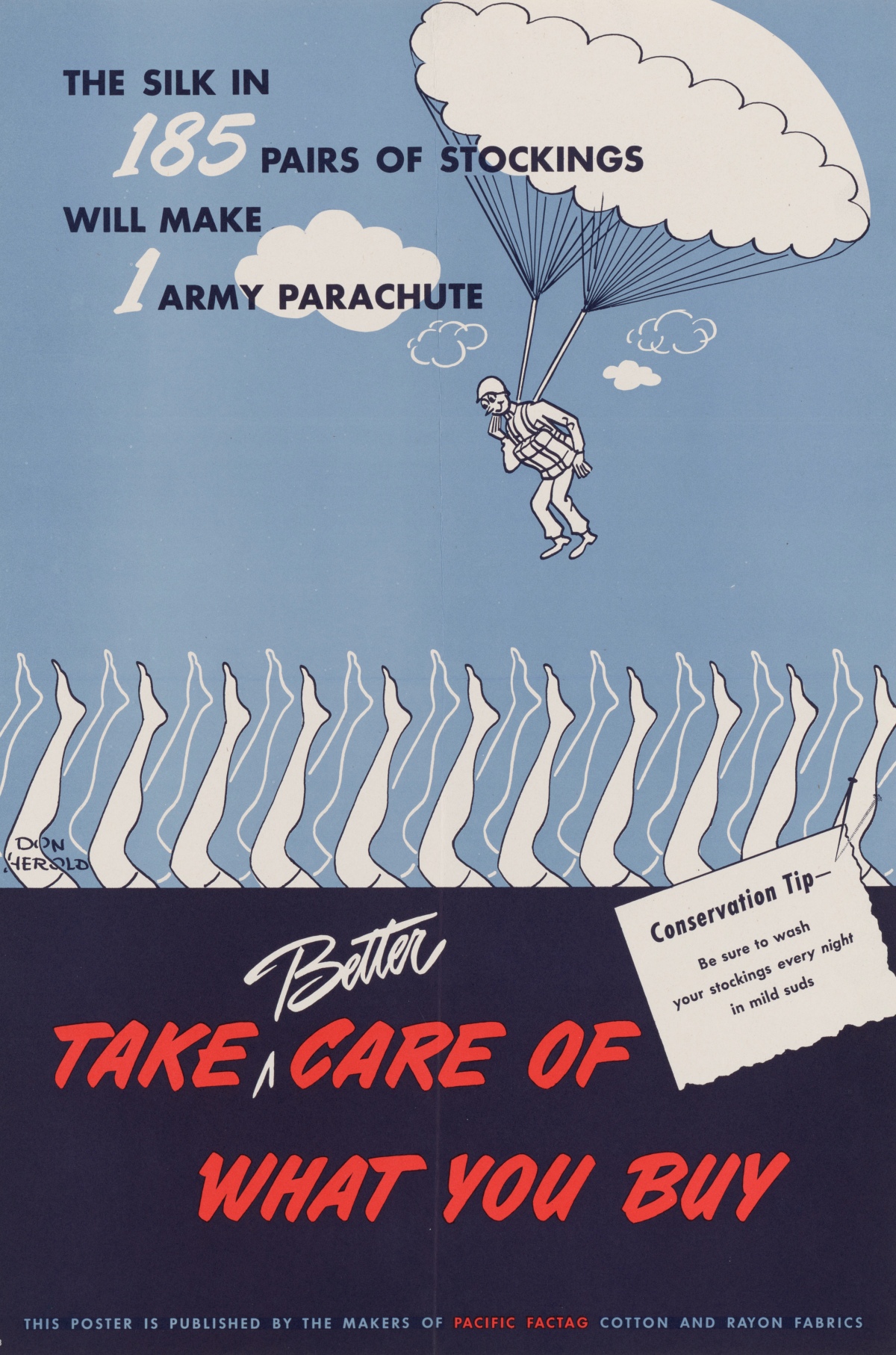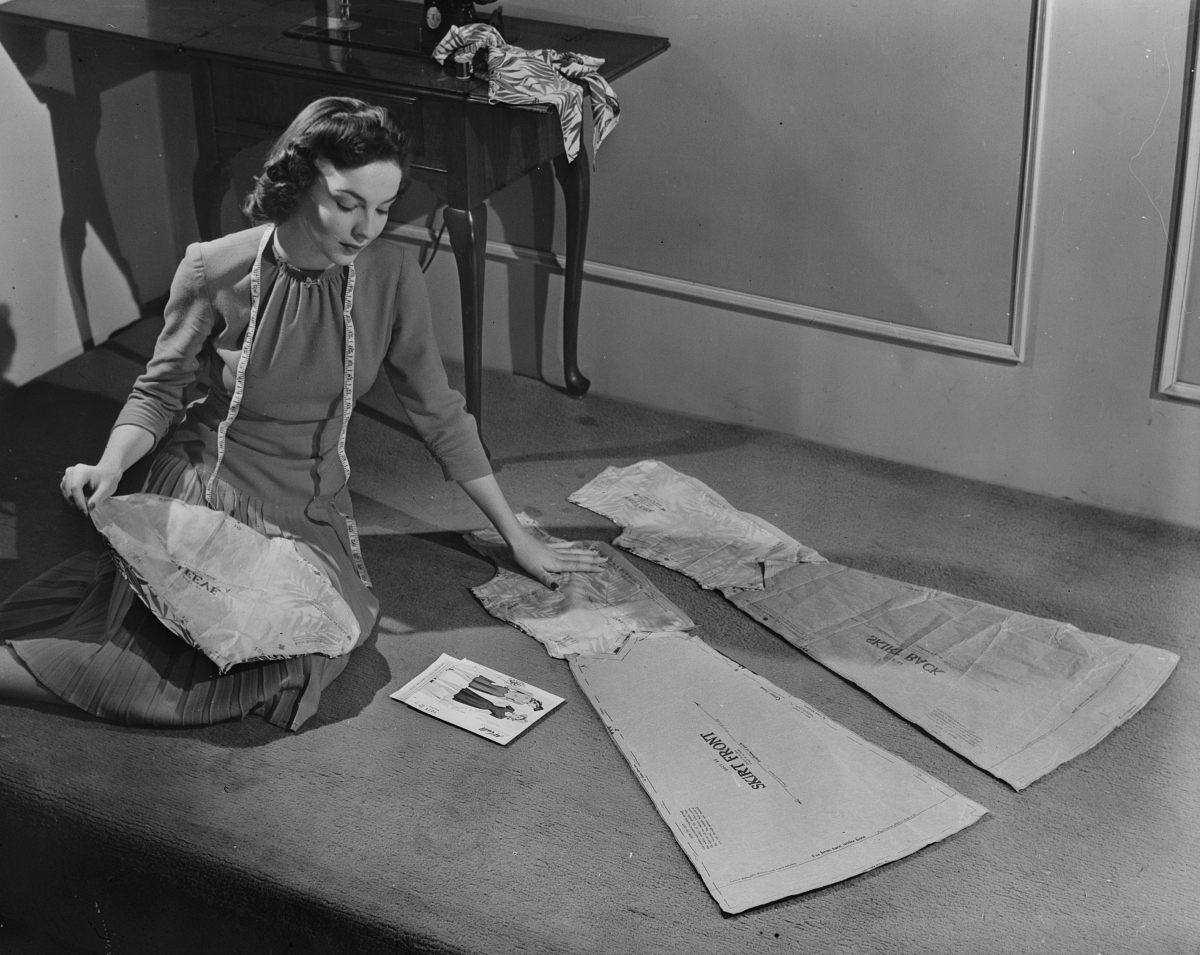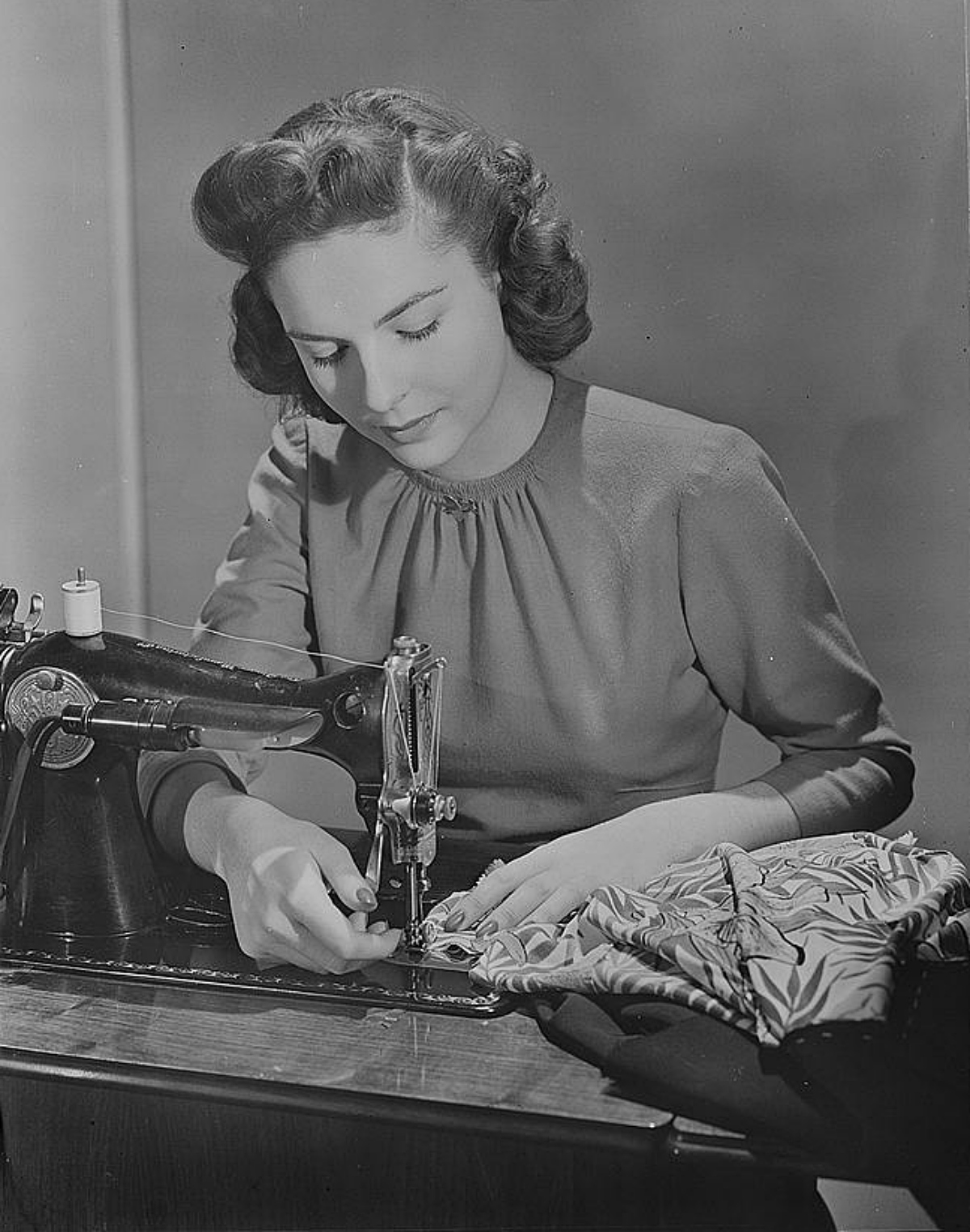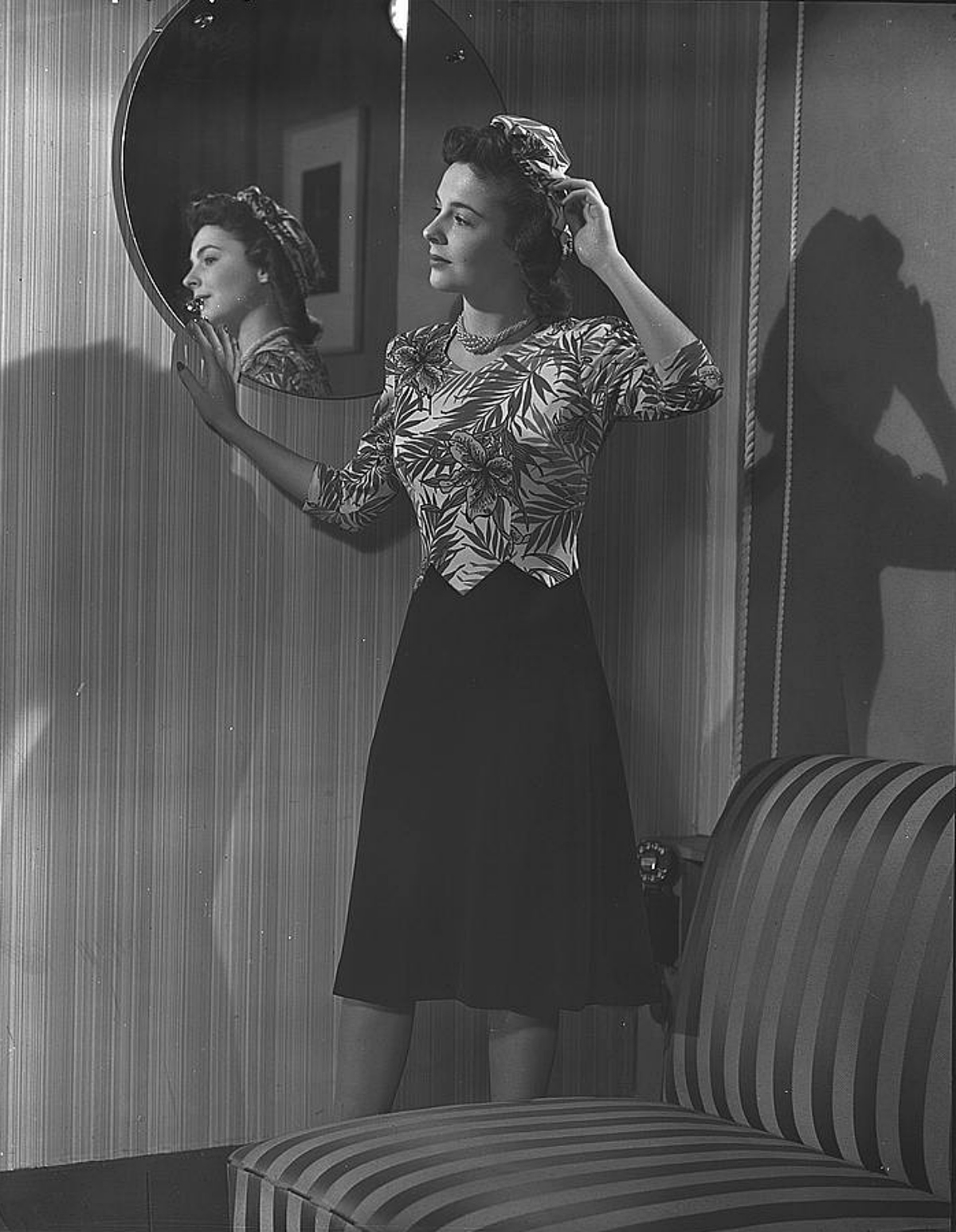During World War II people across the globe had to make sacrifices of themselves in service and civilians had to curtail their consumption of food, fuel, and clothing. During this time walking or bike riding was encrouaged as gasoline and diesel were in limited supply. Food was rationed, although in the U.S. this was not felt so hard as in parts of Europe where starvation conditions persisted thanks to German blockades and the occupation of huge portions of the continent. Back in the states, despite having fairly generous rations for food, the restrictions on materials for clothing was certainly felt. But, the government had some tips on how to make your own clothing even under new guidelines on clothing. From 1943 here is the War Production Board’s guide to making a dress at home.

In addition to the common “make do and mend” theme that was promoted on both sides of the Atlantic to make clothes last longer, there were a number of other campaigns going at the time to ensure that there would be enough clothing for everyone.
The period of 1941-1945 was one when women were heading to work in factories and had more disposable income than ever before. While some could then spend that money on themselves, the clothing options available in shops were more limited than before the war and women were encouraged to make their own clothes. Many clothing factories had been converted to making uniforms and parachutes for the armed forces and no longer produced civilian clothes.

According to the 1942 wartime rules of Order L-85 women’s clothing in particular was heavily restricted. Women’s clothing could no longer be made or sold with balloon sleeves or shirred fabrics, as well as a host of other limitations.
Exceptions were to be made for infant wear, maternity clothing, bridal gowns, and burial garments. But, otherwise women’s clothing was transformed into a plainer style overall that used less fabric. Specifically, wool and cotton were most needed to clothe the troops overseas.

From the WPB regarding the cutting of fabrics, “Wartime conservation through home sewing is demonstrated by Powers model Cynthia Hope who works with a fabric-saving dress pattern. All patterns are now adjusted to WPB (War Production Board) conservation rules. Average saving: 1/8 yard per dress. Cynthia cuts the top of her contrast dress with a remnant which would otherwise be wasted. Utilizing remnants saves tremendous yardage, gets smart results.”

They go on to expand upon the process, “Simplified sewing methods now being taught to thousands of American women through stores, pattern companies, and radio shows…. As they did in the last war, thousands of women are asking for sewing instructions. Streamlined methods make sewing quick and easy. To save fabric and time, size corrections are quickly made on paper before the goods are cut.”

Sewing machines were also restricted as they explain, “Cynthia stitches basic seams before fitting, a principle of simplified sewing. While no new sewing machines are being made and the factories are turning out war goods WPB (War Production Board) assures an adequate supply of machine repair parts for home dressmakers. To fully utilize existing machines, many women form community pools make machines available to those who would like to buy them and can’t.”

Strict measurements were given for how much fabric a woman’s dress could use and also for how long her hem could be. Longer dresses were considered wasteful and so a just-below-the-knee look became the norm. From the WPB, “Dress almost finished, Cynthia adjusts her skirt length. The dress’s hem will be no deeper than WPB (War Production Board)-approved two inches. Cynthia’s fabric-conserving pattern requires only three yards of 39-inch material. For all its fashionable appearance it wastes not one inch of material on unnecessary details. A pattern can be used several times; should not be destroyed when first dress is completed.”

“Cynthia’s complete dress spells style plus conservation. By obtaining best quality for least money, Cynthia practices one important war saving: quality wears longer. To twist a turban, Cynthia bought an extra half-yard of material; thus she has a complete costume from a minimum of material. With charming results Cynthia has contributed to the billion yard fabric saving announced by WPB (War Production Board).”
SKM: below-content placeholderWhizzco for DOT

